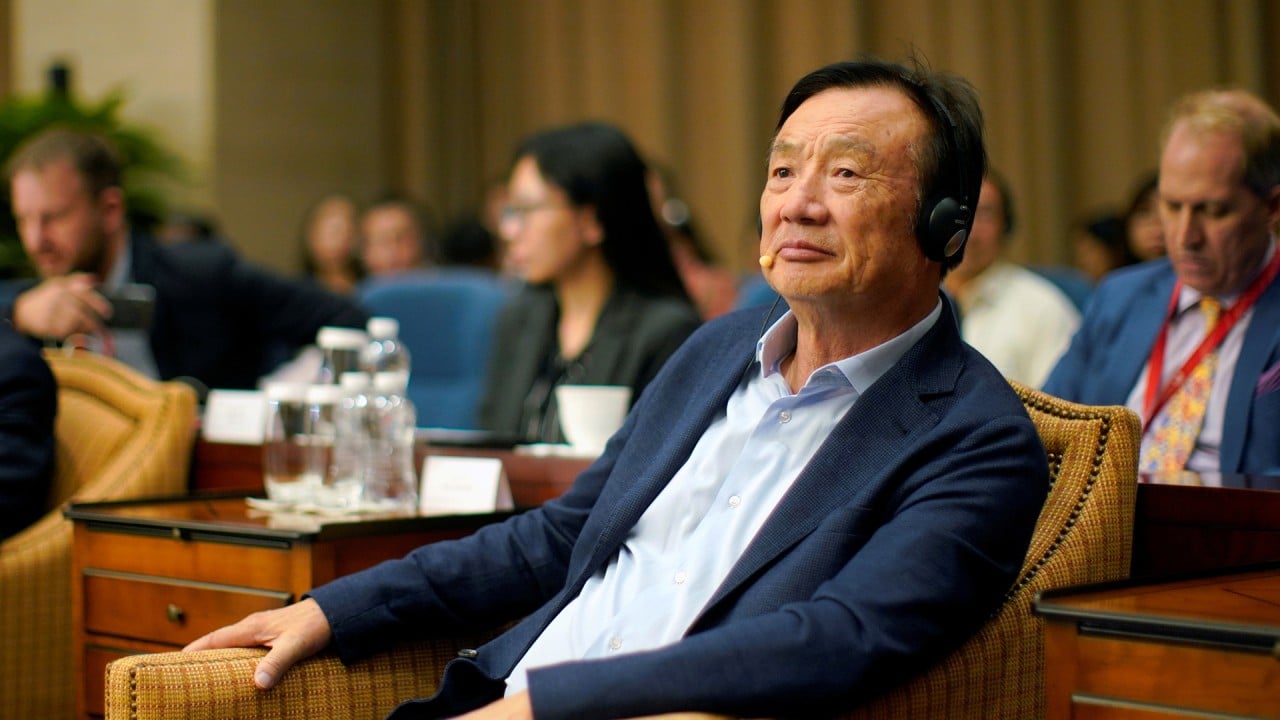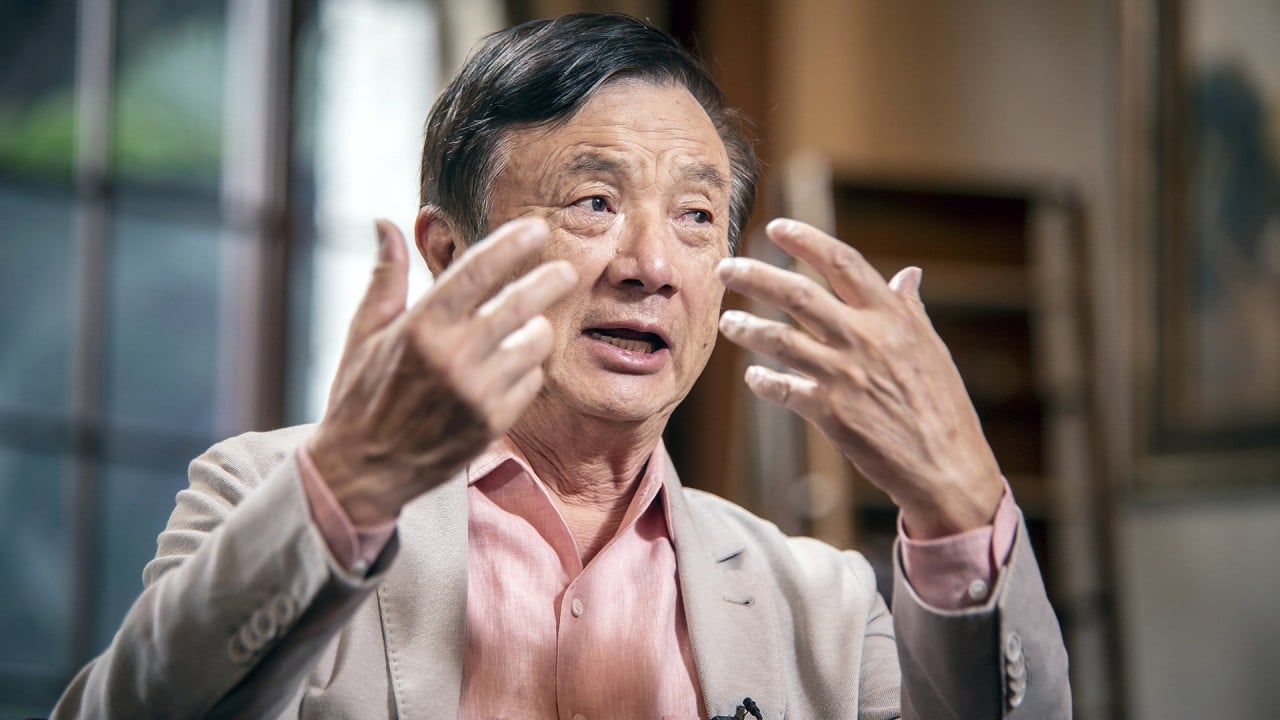
Why Beijing’s new tech master plan will make it more dependent on the US, not less
- Many of the companies Beijing needs for its US$1.4 trillion tech infrastructure plan were put on Washington’s trade blacklist last October
- The new rule requires all foreign semiconductor companies using US origin technology to obtain a waiver to do business with Huawei
The programme, slated for approval by the National People’s Congress meeting in Beijing this month, is the linchpin of Chinese President Xi Jinping’s goal of making the country less dependent on foreign technology.
Trouble is, there’s a fatal flaw. Unless the money is spent developing something to replace silicon-based semiconductors, it will see China’s tech industry become more dependent on the US, not less.
To see why, look no further than the ongoing campaign by Washington to blunt the rise of Chinese telecoms champion Huawei Technologies, which the US considers a national security threat.

05:11
Huawei founder shares his relationship with family and his personality
Last week Washington closed a loophole used by Huawei to skirt a ban on its use of US technology, including semiconductors and software, after it was put on the so-called Entity List in May last year. The new rule introduced last week requires all foreign semiconductor companies using US origin technology to obtain a waiver to do business with Huawei.
How can the US wield such extraterritorial power? Similar to how the greenback’s role as a de facto global currency allows Washington to police financial transactions around the globe, US dominance in silicon-based semiconductors allows it to do something similar in hi-tech.
Silicon chips – and the equipment, materials and processes required to design and manufacture them in high volume – were invented in the US.
If the US-China tech war escalates, Washington has the option of shutting off access to chip design and manufacturing technology to all Chinese tech firms, not just Huawei – though such a move would be very costly for US tech companies that rely on China for sales of these products.

They include China’s AI champions Sensetime and iFlyTek, facial recognition leaders Megvii and Yitu, surveillance camera giants Dahua Technology and HikVision, and supercomputer maker Sugon.
While these firms are already restricted from sourcing chips from US suppliers, they could exploit the same loophole Huawei did to have the devices manufactured by non-US entities like TSMC in Taiwan and Shanghai-based SMIC.
But under the tighter rules, wafer fabrication plants that use US semiconductor processing technology (and they all do, including TSMC and SMIC) must apply for a licence to ship finished chips to Huawei. While such a request might be approved for a consumer smartphone end-use, it wouldn’t be for chips destined for 5G networks or AI-based surveillance systems.
China injects US$2.2 billion into local chip maker SMIC
That means Washington could effectively veto Beijing’s US$1.4 trillion tech infrastructure plan if it decided to apply the tighter Huawei-style export controls to all Chinese companies on the Entity List.
In retaliation for blocking Huawei’s access to TSMC, Beijing is said to be considering its own “unreliable foreign entities” list. There is speculation that Apple and US chip makers Qualcomm and Micron Technology are on the list. All three companies rely on the Chinese market for a significant portion of their sales – more than half, in Micron’s case.

03:19
Huawei’s Ren Zhengfei says he drew on the best of US politics and business to found telecoms giant
If Apple was named “unreliable” that would be a slap in the face for its CEO, Tim Cook, who has spent years nurturing a relationship with Beijing. Apple also indirectly provides employment for 1 million Chinese workers via its Foxconn subcontractor in China.
Beijing would be wise to heed Ren’s advice. A de-escalation of Sino-US tensions is the only way out of this predicament but the chances of that are greatly diminished if Beijing ups the ante in a “wolf warrior” counter punch.
Taiwan chip maker ‘stops new Huawei orders after US restrictions’
A similar aggressive approach by Chinese diplomats amid the global pandemic has backfired. Huawei may also need to tone down some of its more aggressive tactics if it wants to de-escalate the current situation.
In a world where China’s tech champions cannot survive without US core technology – at least for the foreseeable future – and where American tech companies depend on the Chinese market for a large portion of their profits, which side would have the upper hand in a conflict? Regardless, it would be a pyrrhic victory.
Craig Addison is a production editor on the Post’s tech desk in Hong Kong. From 2002 to 2009 he worked for SEMI, the Silicon Valley-based trade group representing semiconductor equipment and materials companies. @craigaddison
Help us understand what you are interested in so that we can improve SCMP and provide a better experience for you. We would like to invite you to take this five-minute survey on how you engage with SCMP and the news.

